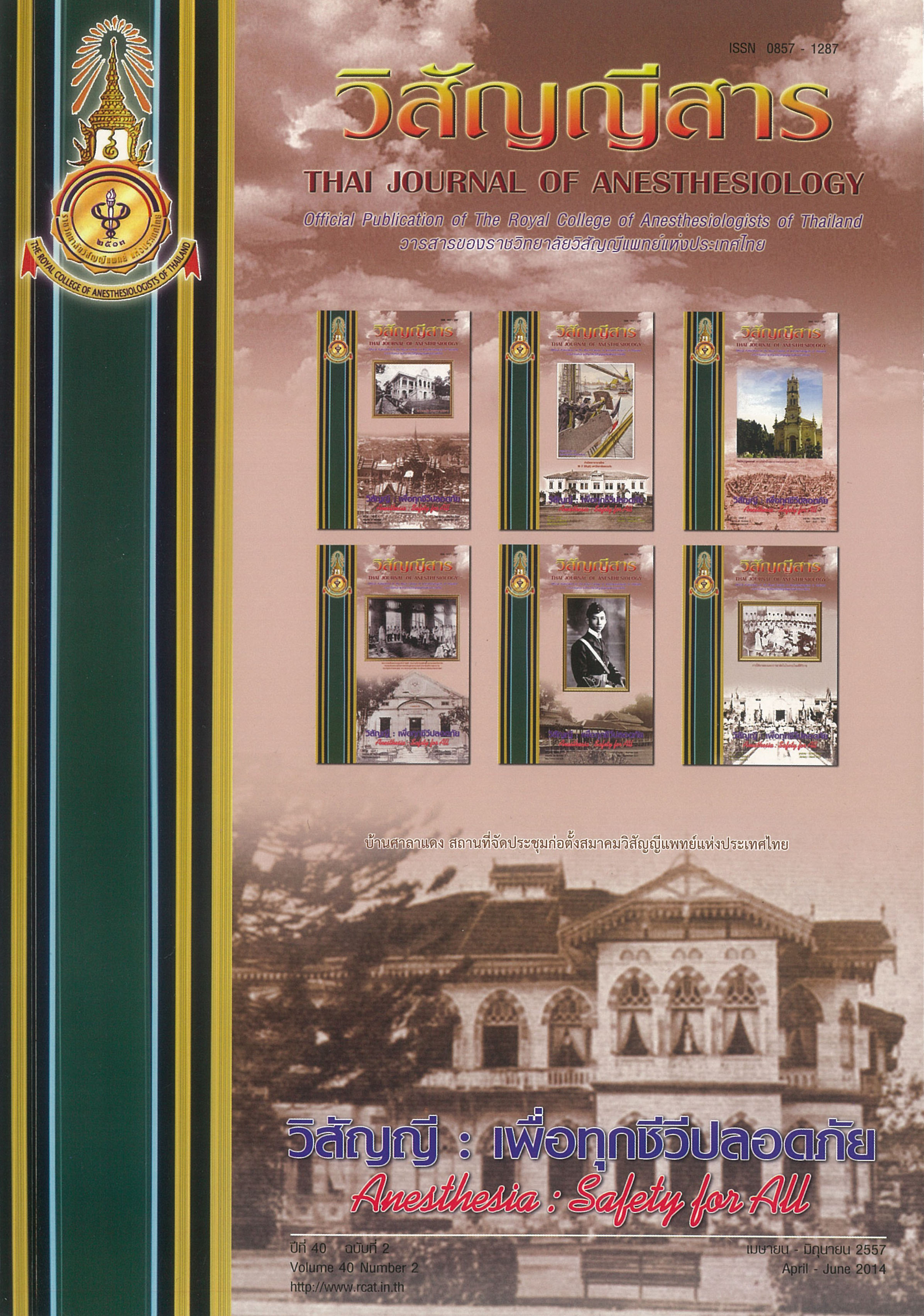Comparison of Endotracheal Tube Cuff Pressure with Minimal Occlusive Volume Techniques
Main Article Content
Abstract
Background: Inappropriate endotracheal tube cuff pressure causes various complications, such as sore throat, tracheitis, tracheal ischemia and aspiration. The recommendation is to inflate endotracheal tube cuff pressure to 25 - 30 cmH2O with cuff pressure manometer but it has not always been available especially in the operating theatres. Therefore, the minimal occlusive volume (MOV) technique has been widely suggested. There are two most common MOV techniques. First, incremental addition of air until the MOV is established (Technique A). Second, full cuff inflation followed by removal of 0.5 ml of air until a leak is detected then restore the cuff seal with 1 ml of air (Technique B).
Objective: To compare the endotracheal tube cuff pressure inflated by two MOV techniques.
Methods: A randomized crossover study was conducted in 40 patients who were scheduled for surgery under general anesthesia at Ramathibodi Hospital. We randomized patients into two groups, after oropharyngeal suction and fully endotracheal tube cuff deflation. In Group 1, the endotracheal tube cuff was inflated with the MOV Technique A followed by Technique B while Group 2 used Technique B and was followed by Technique A. The inflated volume and pressure that was created in the closed system manometer by each MOV cuff inflation technique was recorded and then the differences between pressure and the reference pressure of 25 cmH2O of two MOV techniques were calculated.
Results: There was no significant differences of patients’ demographic data between two groups. The mean endotracheal tube cuff pressure created by the MOV Technique B was significantly higher than Technique A (21.53 + 5.94 and 19.05 + 4.07 cmH2O respectively; p < 0.05). The range from pressure observed to reference pressure of 25 cmH2O between two groups were not significantly different (Technique A 6.15 + 3.75 and Technique B 5.83 + 3.59 cmH2O; p > 0.05).
Conclusions: MOV technique is an alternative technique that does not create the pressure higher than the recommendation, but the mean pressures of both groups seem to be lower than reference pressure. Therefore, we recommend using cuff pressure manometer to optimize it. However, if necessary, MOV Technique B is more preferable.


